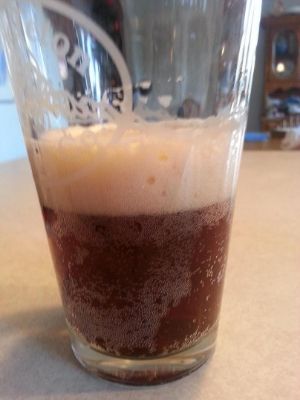So y'all got me to wondering about my latest brew -- a Newcastle clone.
Background: I've had the privledge of brewing a couple of times with my LHBS owner (a very talented brewer), and he added his Pliny clone wort right on top of a yeast cake he had used at least 2-3 times before -- without removing any of the cake. He fermented in a 10 gal keg, transferring the fermented beer with CO2 into another keg right before dropping the new wort onto the old cake. He never opened the keg. Once the wort was in, we just shook the heck out of it, and away it went. That beer turned out GREAT!
Experiment: Recently, I did essentially the same thing with my NC clone; I brewed a 3 gal. batch, fermented in the primary carboy for 2 weeks and then brewed another one and dropped it right on the yeast cake within an hour or two without so much as a "by your leave." The yeast I used was Wyeast London ESB. I will add that I keep a close eye on fermentation temps and that I was only risking <$9 of ingredients. I bottled it on 12-13-13 and normally would not touch it for another month or so, but I couldn't resist after reading this thread. I just popped one to taste test, and it looked like this:
Results: Smells and tastes like all of my other NC clones (a little immature, of course). Crystal clear, too!
Bottom Line: I would not hesitate to do this again; however, I do not think I would do a third brew on top of a full yeast cake just to be safe as I believe there would be a lot of organic material available to potentially contribute off flavors. I would not hesitate to scoop out a pint jar and re-pitch a 3rd or even 4th time in the future, though. That might be an interesting experiment down the road (i.e. "how many licks does it take to get to the center of a Tootsie Pop) before the brew changes character...





